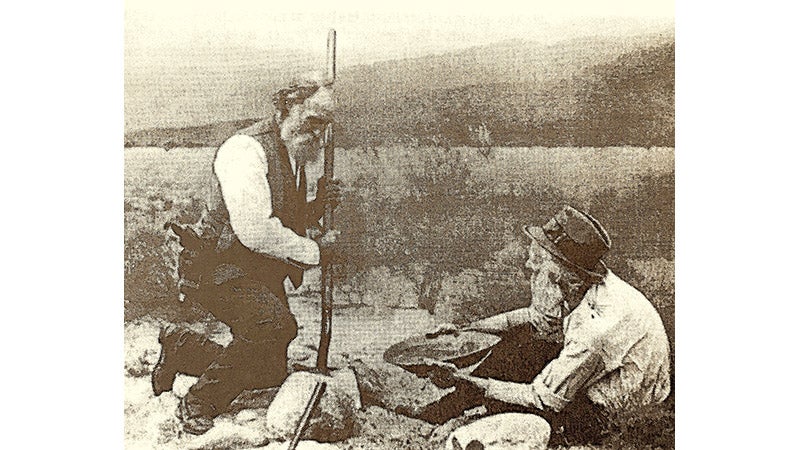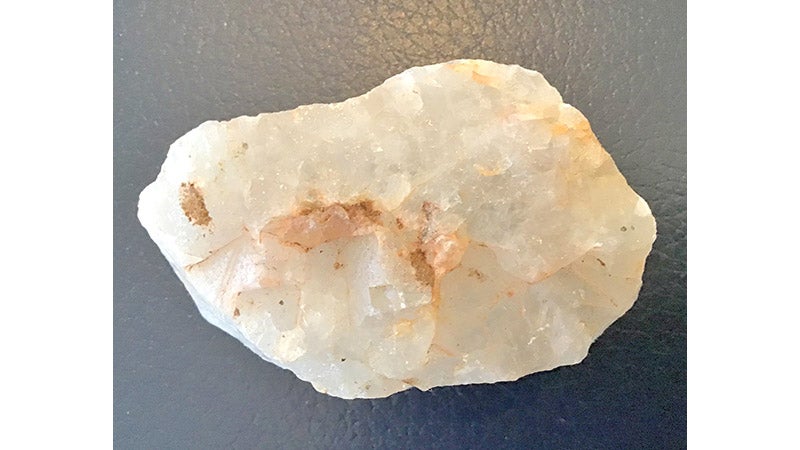From The Archive: In 1837, they found gold in Holliday Creek
Published 12:02 am Saturday, May 20, 2023
|
Getting your Trinity Audio player ready...
|
In 1837, you didn’t have to go to California to strike gold. All you’d have had to do was cross over the Appomattox River into Buckingham County with a gold pan. In Holliday Creek, the nuggets would have been waiting in every sandbar and gravel bed.
It was 1837 when flecks of gold were discovered in Holliday Creek, the tributary that flows into the Appomattox River 27 miles upstream from Farmville. The gold that local miners discovered was part of a vein of volcanically produced rock that runs underground from Fairfax County through Buckingham and into Appomattox County.
The ancient rocks that contain these gold deposits, now in the form of quartz seams, produced the shiny white rocks prehistoric Native American Indians used to make arrowheads. This milky quartz turns up in just about every garden and farmer’s field in our area.
Where in Holliday Creek was the gold?
The gold flecks the miners found embedded in quartz were nearly microscopic in size and are much heavier than most minerals. The heavy gold flakes trapped in sand and gravel beds appeared as the quartz seams weathered, usually the result of being exposed in the beds of a stream.
For hundreds of years, miners used a technique called panning to recover these gold flecks. They used a plate-shaped metal pan with raised ridges in a circular pattern on the inside. The pan was filled with water and sand and then swirled round and round so that water and lighter materials were washed out over the lip. Heavier gold-bearing quartz sand was left behind in the pan’s ridges. Miners scraped out this grit and stored it in a bottle. For hours, weeks and even months on end, miners would continue the process.
Gold-bearing sand was often found at the bend of a stream where the current slowed and sediment was dropped. All miners, whether in California or Farmville, faced a similar problem — ensuring that the golden flecks in their pans were really gold.
Iron pyrite, also called fool’s gold, also turned up in quartz rocks. To determine if a find was genuine gold, miners developed three tests.
The first involved a simple piece of glass, perhaps the bottom of a whiskey bottle. Miners knew that iron pyrite scratched glass, while real gold did not.
The second test used a magnet. Iron pyrite, or fool’s gold, is attracted to a magnet; real gold is not.
The final test was simple but dangerous. To conduct this test, miners soaked their day’s collection of panned grit in a bowl of cyanic acid, no doubt inhaling the fumes all night as they slept. Despite the danger of the test, the results were accurate — true gold would dissolve in cyanic acid, while fool’s gold would not.
‘Many miners experienced symptoms’
Many miners experienced symptoms of cyanide poisoning during those years. Symptoms included headache, dizziness, shortness of breath and vomiting. Known as “miner’s ague,” this malady was part of a gold panner’s life, but in those early days, no one knew what caused it.
Perhaps “miner’s ague” was behind the misfortunes experienced by William A. Jones, who brought his wife Caroline and their 11 children from Wales to Virginia in 1837. They settled on the banks of Holy Day Creek, today known as Holliday Creek.
After settling in Virginia, the Jones family registered a gold mine on the creek that was called “Appomattox I.” In the census of 1850, it appeared that the Jones family had struck it rich. Their house and land was valued at $64,000 at a time when the average valuation was around $4,000.
But from that happy point, things “went bust” as some great misfortune overtook the Jones family. Within 14 days in December 1852, three daughters died, and by the 1860 census, only Mrs. Jones and four children were left alive. Perhaps it was an epidemic or series of accidents — even miner’s ague — that led to the Jones family’s misfortune. It could have been the hard life led by rural folks at that time. All that remains to explain the mystery is a number of marked and unmarked graves in a small family cemetery on the banks of Holliday Lake.
While we don’t know what caused the sad end of the Jones family, it seems likely that a desire to “strike it rich” was part of the story.
Gold never wears, corrodes or tarnishes, and its uses are varied and many even today.
A trip to the dentist also relies on gold. Crowns, inlays or dentures draw from the 20 tons of gold used by American dentists every year. When you touch a key on a computer, it’s a gold circuit that relays your command to a microprocessor. Even the airbag system in your car or truck operates with a gold-coated electrical contact.
While we seldom pause to thank the intrepid miners with gold pans in hand who forged the way for today’s technology, perhaps we should. The gold they found in “that thar river” has led to better lives for all of us today.
We’re the ones who’ve “struck it rich.”
Dr. Jim Jordan taught at Longwood University for almost 40 years before retiring as the Board of Visitors Distinguished Professor of Anthropology.
Editor’s note: This story originally ran on March 13, 2021 and is part of our Farmville Herald archive. You can search for more stories from our past by clicking here.









